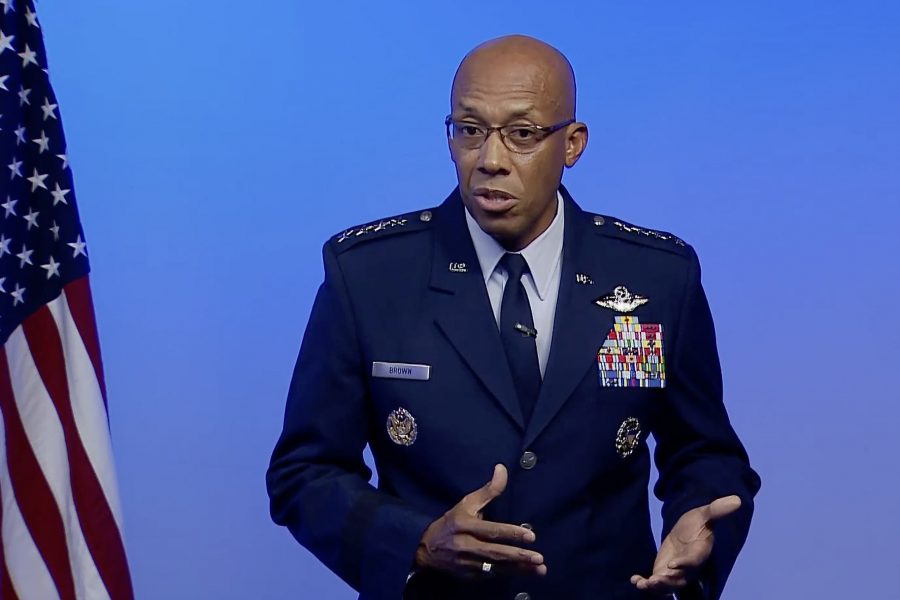The new Air and Space Expeditionary Force model, which goes into effect in the next few weeks, will focus on small groups deploying together, and will likely see Airmen doing more than one job each and deploying to more bare-base locations, Chief of Staff Gen. Charles Q. Brown Jr. said Sept. 16. He suggested that USAF will seek some relief from the deployment burden from the other services.
The old model of the AEF was essentially “crowdsourcing,” Brown said during a press conference at AFA’s virtual Air, Space & Cyber Conference, to the point of dispatching individual airmen, one at a time, to fill vacancies in forward-deployed areas.
Now, “the key aspect to this is how … we build teams that work together, and then how do we deploy them together,” Brown said. “You’ve got to build a model that’s somewhat disciplined to do that” in order to preserve readiness across the force.
“Flexibility is the key to airpower, but sometimes we get a little too flexible, we have to build a little structure into this, going forward.”
The goal will continue to be predictability for airmen and their families, Brown said, but with the addition of a more rational way to present forces to combatant commanders.
Asked how the changes will be apparent to rank-and-file airmen, Brown said “instead of just going out and meet your team when you get to your deployed location … the goal is to have you deploy with the same folks” each time.
Also, to carry out dynamic force employment missions, “You may not be going to” the bases that USAF has rotated in and out of for 25 years in the Middle East. Instead, “We’re going to have to be ready to go places and deploy places where you don’t have an existing structure” of support.
Finally, the push toward “multi-capable airmen” means people will go to a location “where you’re doing several different things.” He gave as an example a female Airman in Guam who briefed him on communications, and not long after, “she’s in battle rattle and now she’s doing security. Our Airmen have to have the capability to do that. So that’s the aspect that will be different: where we can trust them to do not only their job,” but others as well. The force will have to be “light, lean and agile,” Brown said.
As for those Airmen in high-demand/low-density career fields, Brown said only, “That’s something we have to manage closely.” However, he added, “We also have to talk to the Joint Force and say, we have a finite set of resources to do this. We can’t wear them out so they’re not ready for the future.”
Senior USAF leaders have said the AEF technically goes into effect October 1, to align with the Pentagon’s Global Force Management system, but the full array of changes may take a few months to be approved and be implemented. The new system is meant to do a better job of presenting forces to combatant commanders and standardize the numbers of forces available to them.
